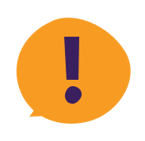If you think someone has overdosed ...
Put them in the recovery position (or on their side) and get help fast by calling 999, telling emergency services what you know. This could save their life.
Signs of an overdose will depend on what’s been taken, but may include:
- Not being able to wake someone up
- Difficulty breathing
- Lips or fingertips with a blue (on lighter skin) or grey (if darker skin) tinge
- Finding it difficult to walk or talk
- Confusion
- Drug paraphernalia in the room
If you have naloxone, administer it
Naloxone reverses the effects of opioid drugs like heroin, methadone and fentanyl. If someone hasn’t overdosed on opioids, naloxone won’t harm them - but if they have, it could save their life.
You can get a naloxone kit and training on how to use it from your local WithYou service.




